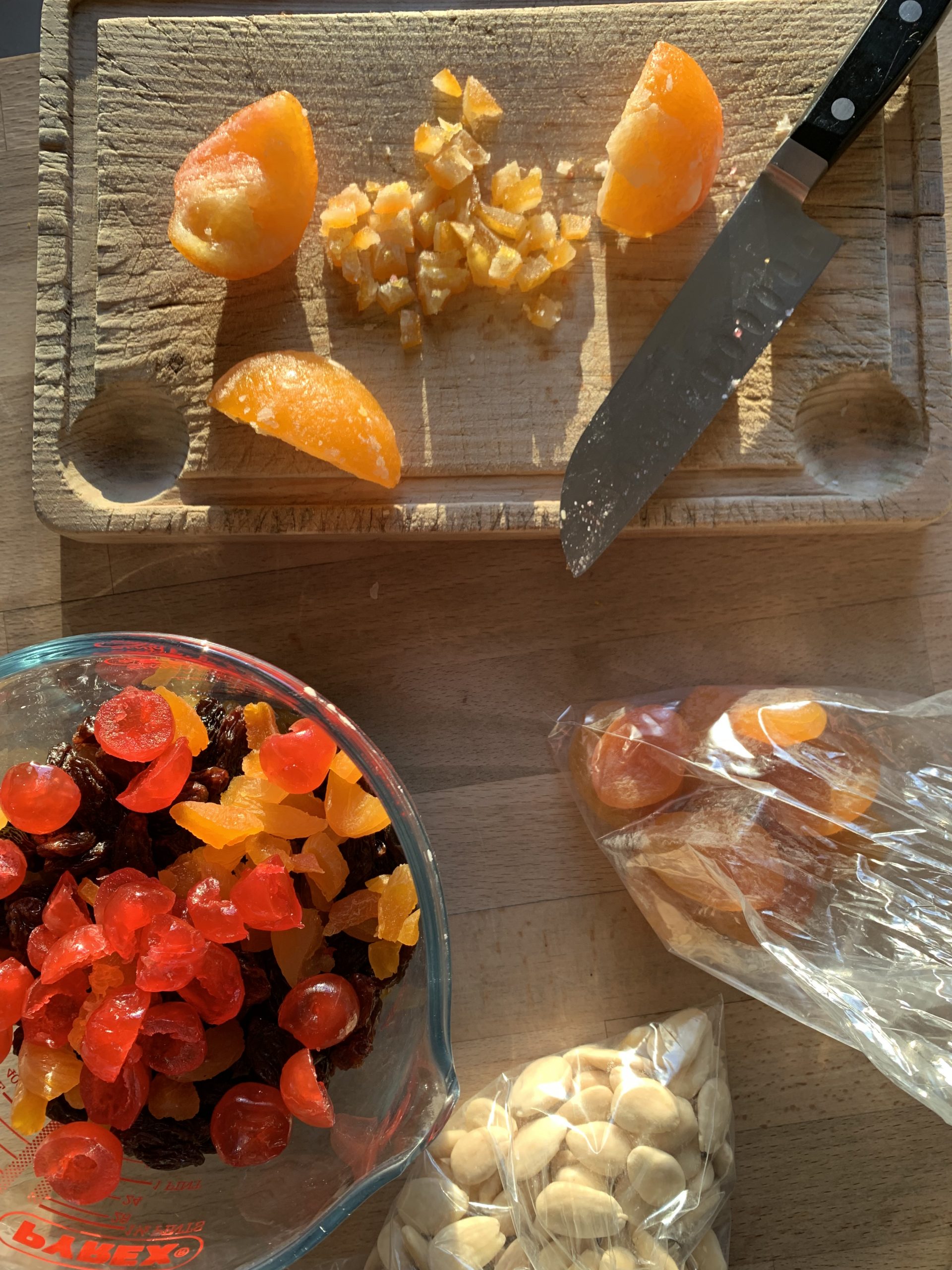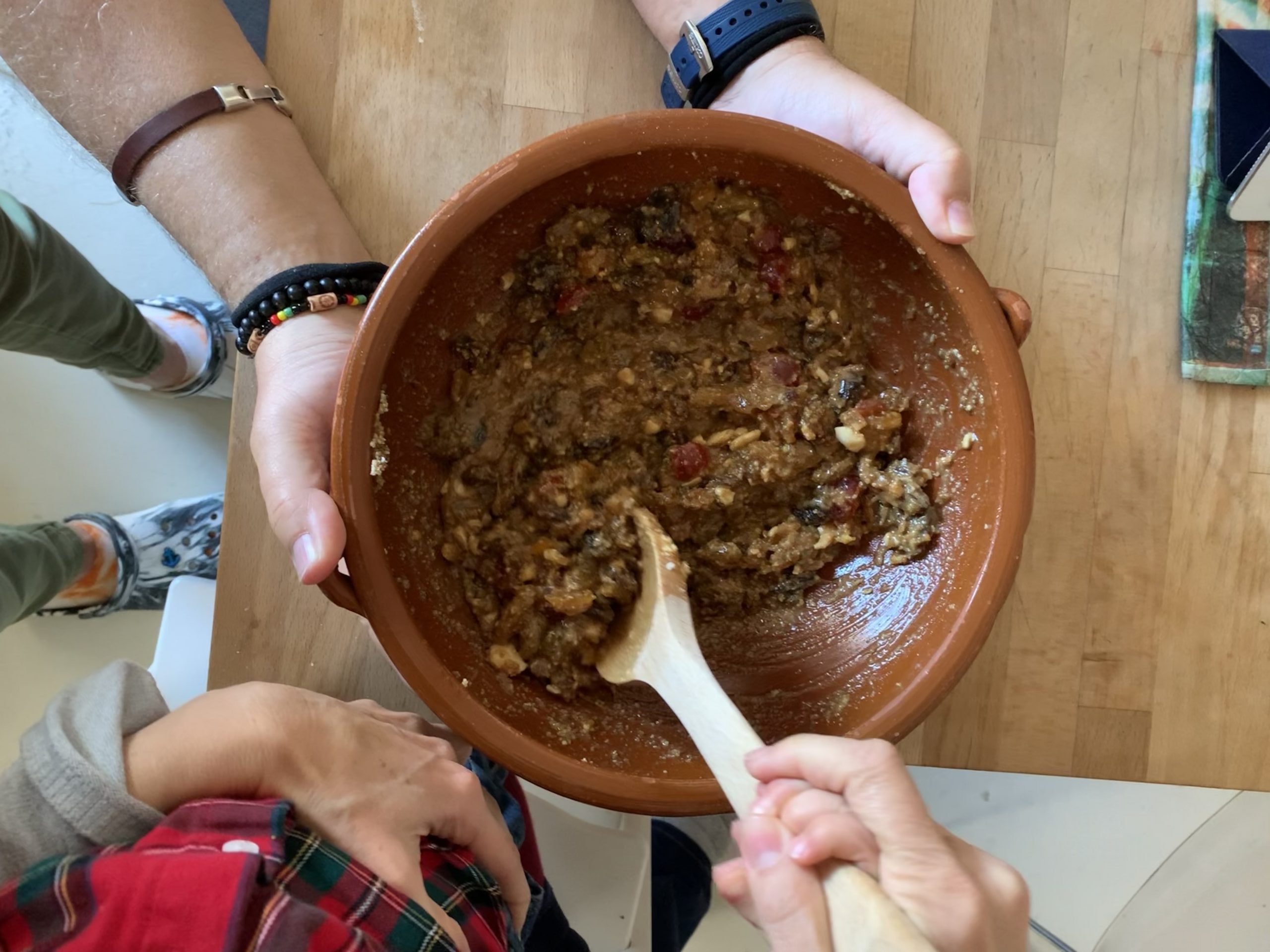Traditional Christmas Pudding
After deciding to make my own Christmas pudding, I was left with the unenviable task of nailing down a recipe. Without a family recipe, I immediately turned to Mary Berry – but really wanted to make it my own: a recipe for me to pass on to my son in years to come. So, here it is, my traditional Christmas pudding recipe with nods to Mary Berry, Dick Strawbridge, Nigella Lawson (since when has she only used her first name?), The Royal Mint, and Delia (Smith!).
The Christmas pudding tradition is said to have began with Prince Albert, the husband and consort of Queen Victoria – although it was probably introduced from Germany by George I in 1714. When Advent begins, on the forth Sunday before Christmas, families (and friends) gather to help make their pudding by giving it a good stir. Stir-up Sunday, originally referred to the opening words of the prayer for this day in the 1549 Book of Common Prayer – stirring the hearts of the church-going parishioners.
In your kitchen on stir-up Sunday, it’s important to get your bearings as the pudding mix is traditionally stirred from East to West – to honour the Reyes Magos (The 3 Wise Men) who visited baby Jesus. The silver sixpence is added at the stirring and who-so-ever finds it in their piece of cooked pudding will enjoy good luck in the year to come.
Although your Christmas pudding prep should begin 4 weeks before the Christmas meal, giving it ample time to mature, you can do it anytime until Christmas Eve – in our case 2 Sundays before Christmas.
Makes 1 delicious pudding
100g self-raising flour – or 100g plain flour + 1 tsp of baking powder
40g wholemeal breadcrumbs
75g cold butter
100g unrefined cane sugar
1 apple, grated
about 500 grams of dried fruit {
60g glace cherries halved
120g raisins
120g currants
120g sultanas
80g dried apricots chopped
}
candied orange peel … about 1 oranges worth!
80g blanched almonds, roughly chopped/ or smashed with a rolling pin
2 tbsp black treacle
2 tsp mixed spice: allspice, nutmeg, cloves, ginger, coriander and mace.
1 tsp ground cinnamon
2 eggs large, lightly whisked
175 ml Pedro Ximénez
Brandy for flaming

Instructions
The night before… or up to an hour before you stir, place all the dried fruit in a bowl and pour over the sherry.
On stir-up Sunday, with family and friends on hand, add all the ingredients to a large bowl. Add the silver sixpence, that has previously been cleaned in cola. Take turns to stir the mixture for East to West and make a wish. Cover the bowl and leave overnight.
The next day… now it’s time to steam your pudding. Traditionally, Christmas puddings were steamed in tied muslin cloth which produced a cannonball shaped pudding. With the prospect of a flaming cannonball loose in the kitchen, I plumped for a flat-bottomed pudding and used a suitable bowl (about 1.5 litre). Before spooning in the mixture, grease the bowl with butter and place a cut circle of baking parchment to the bottom – for an easier extraction on the day. Using the back of a spoon, press the mixture down before covering the bowl with a pleated sheet of baking parchment and tin foil – just one pleat in the centre. In a pan large enough to accommodate the bowl, add a jar lid trivet and enough water to reach halfway up the bowl. Using double folded length of tin foil, gentle lower in the bowl – you will use this to extricate the bowl in seven hours time. Bring to the boil and gently steam your pudding for seven hours – adding more water if and when needed.
Once steamed, remove from the pan and leave to cool. Replace the parchment and foil layers. Then leave to mature in a cool, dark place until Christmas.
On Christmas Day, steam the pudding for 2 hours before turning it out onto a serving plate. To flame your pudding, warm the brandy in a small pan before pouring it over the pudding and igniting it.
JAMx

